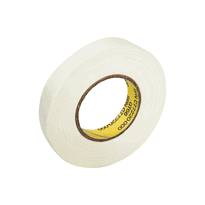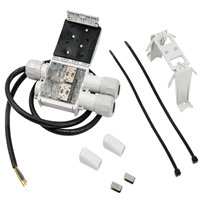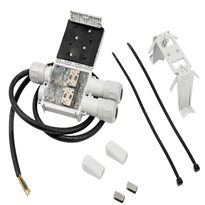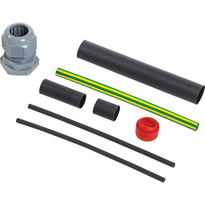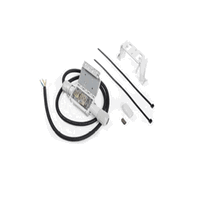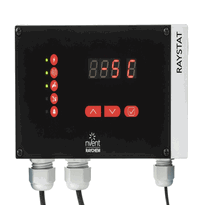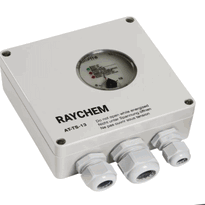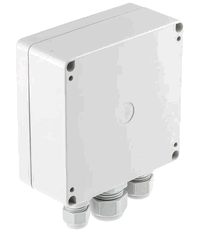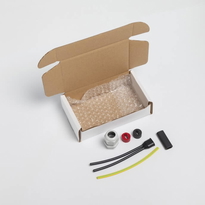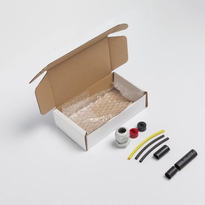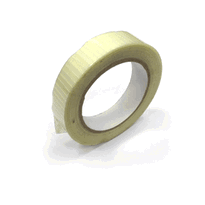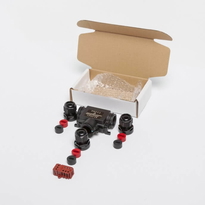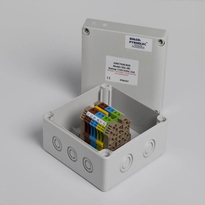Heat Tape for Water Pipes
Heat tape for water pipes effectively prevents freezing by providing controlled heat along the length of the pipe. It is available in various types, including self-regulating, constant-wattage, and specialized high-temperature tapes for industrial applications.
Proper installation involves cleaning and inspecting the pipes beforehand, selecting the appropriately sized tape, and securing it evenly without overlaps. Ensuring good contact and avoiding damage to the tape are essential for optimal performance.
Safety measures include regular inspections, correct grounding, and adhering strictly to the manufacturer’s instructions. When paired with suitable insulation, heat tape can optimize energy efficiency and extend the lifespan of your water systems.
Maintenance, correct application, and adhering to safety guidelines are vital to ensure reliable operation. Properly installed and maintained heat tape can provide peace of mind during cold weather conditions, protecting your water supply from freezing.
Types of Heat Tape for Water Pipes
There are several types of heat tapes available for water pipes, each designed to provide effective freeze protection under specific conditions. Self-regulating heat tapes automatically adjust their heat output based on ambient temperature, increasing efficiency and safety by only delivering power when necessary. These tapes often feature thermostatic controls, enabling users to set precise temperatures, and are recommended for variable temperature environments. Self-regulating tapes respond dynamically to temperature changes, which helps prevent overheating and energy waste. They are especially suited for areas with fluctuating temperatures or where energy conservation is a priority, embodying the thermal management principles outlined in insulation systems. Constant-wattage heat tapes provide continuous, steady heat regardless of surrounding conditions, making them suitable for consistently cold areas. However, they can be less energy-efficient and pose a risk of overheating if not used correctly. Silicone rubber heat tapes, priced between £8 and £12 per meter, resist chemicals and moisture, with adjustable thermostats for safety. Fiberglass-insulated tapes are versatile, offering wide temperature ranges suitable for different installations. Samox high-temperature tapes are specifically designed for extreme industrial environments, capable of handling temperatures up to 760°C (1400°F). These are typically used in demanding applications where intense heat resistance is required. Self-regulating tapes are among the most popular choices due to their safety and energy efficiency.
Proper Installation Procedures
Proper installation of heat tape begins with meticulous preparation of the pipe surface to ensure optimal heat transfer and safety. The pipe must be thoroughly cleaned to remove moisture, dirt, and debris, and fully dried prior to application. It is essential to inspect the pipe for any damage or weak spots, repairing them as necessary. Additionally, remove any old insulation or residues that could interfere with adhesion. Ensuring that the workspace is free of dust and debris enhances manufacturing efficiency, preventing potential imperfections in the installation. To visualize, consider this table:
Step |
Action |
| Clean and Dry | Ensure a moisture-free surface |
| Inspect | Check for damage; repair if needed |
| Remove Old Insulation | Clear space for new tape and insulation |
| Measure Pipe | Confirm diameter and length for proper tape size |
| Prepare Surface | Ensure smooth, debris-free surface |
Following this systematic approach guarantees effective heat transfer, minimizes risks, and results in a reliable, long-lasting installation performance.
Safety Tips for Using Heat Tape
Ensuring safety when using heat tape involves following specific precautions that minimize the risk of electrical hazards, fires, and damage to equipment. Regular inspections should be performed, checking for cracked insulation, exposed wiring, and signs of wear. Damaged heat tape must be replaced immediately to maintain safe operation. Certified heat tapes are tested and approved to meet recognized safety standards, reducing the likelihood of fire hazards.
It is essential to keep end caps sealed properly and positioned off the ground to prevent moisture ingress, which could cause short circuits. Always use only heat tape that's certified to recognized safety standards. Plugs should be grounded and equipped with three prongs and plugged into GFCI-protected outlets to ensure proper grounding and to reduce the risk of electric shocks. Proper placement of heat tape is crucial. Avoid stacking the tape on itself or covering it with incompatible insulation, as this can lead to overheating. Additionally, verifying the electrical protection provided by safety devices like GFCIs can significantly mitigate risks associated with electrical faults.
It's important to follow the manufacturer's instructions carefully, especially regarding the installation of thermostats and correct sizing, to prevent overheating or electrical faults. Regular maintenance is key to safe and reliable operation. This includes inspecting the system before each winter season, ideally around autumn, and replacing any damaged components promptly. Always unplug the heat tape before conducting inspections or maintenance.
Enhancing Efficiency and Longevity
Enhancing Efficiency and Longevity of Heat Tape
To maximize the efficiency and lifespan of heat tape, it's important to select suitable products, install them correctly, and conduct regular maintenance. Choosing the right type of heat tape, such as self-regulating cables, is vital. These cables adjust their power output based on the ambient temperature, which helps to reduce energy consumption and improves safety.
Proper installation is essential to ensure optimal performance. Wrap the heat tape evenly around pipes, avoiding overlaps that can cause overheating or damage. Ensure all connections, especially at outlets and thermostats, are secure to prevent faults and maximize system reliability.
Routine maintenance plays a crucial role in prolonging the lifespan of your heat tape. Regularly inspect the system for signs of damage, such as wear or frayed wiring. Keep the tape clean by removing dirt or debris that could impede heat transfer. Testing thermostats periodically helps confirm they're operating correctly, ensuring reliable activation of the heat tape when needed.
Pairing heat tape with insulated pipe wraps can significantly extend its effective lifespan and improve overall efficiency. Insulation reduces heat loss, allowing the heat tape to work less hard and saving energy.
Ongoing monitoring of the system’s performance is recommended. This can help identify potential issues early, such as fluctuating temperatures or power failures, enabling timely repairs and preventing costly damage or repairs later.
Adhering to these best practices will provide maximum protection against freezing conditions, safeguarding plumbing systems throughout the winter months while optimizing energy use and ensuring long-term durability.
Conclusion
Selecting the appropriate heat tape, following correct installation procedures, and adhering to safety guidelines are essential for effective pipe protection. Regular inspections and maintenance of the heat tape help to optimise its efficiency and prolong its lifespan. Proper setup not only prevents damage to the plumbing system but also minimizes the risk of issues arising during cold weather. By implementing these best practices, you can ensure a reliable and safe method of keeping water pipes functioning properly in freezing conditions, thereby supporting the long-term integrity of your plumbing system.








